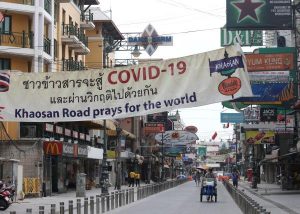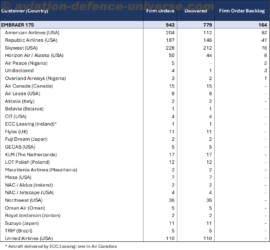
By Suresh Somu
Jakarta, Indonesia. 18 April 2020. Thailand knows how to stand tall when the toughest tests come round the corner.
True to the saying that “when the going gets tough, the tough gets going” the “Land of Smiles” has proved during the ongoing medical crisis that their forte in the coronavirus pandemic is to have their hard-earned guards in the right places.
A country that kept its doors open in the early days of Covid-19 appears to be struggling to contain the numbers of the transmission. Why did the nation continue to trend on this notion?

Sadly, it may just boil down to the economy survival. Every one in six jobs in Thailand are related to tourism. And just to provide perspective, Bangkok, the famous capital, was ranked No 1 surpassing Paris and London with 22.78 million visitors in Mastercard list of “Global Destination Index 2019”, a classic example of a tourism-reliant Thailand.
According to the secretary-general of the Office of the National Economic and Social Development Council in 2019, the government projects, tourism sector will account for 30 per cent of GDP by 2030, up from 20 per cent in 2019.
You may well ask: Great for economic growth at the expense of curbing the Covid-19? In the early stages, businessman turned politician, Health Minister and Deputy Prime Minister Anutin Charnvirakul boasted that Thailand is ranked as sixth in the world for providing good health care. Riding on the glory, he added that even the people were surprised how Thailand managed to keep the infection cases low as compared to other nations all over the world.
Thailand definitely took the gamble given its robust healthcare system. So when neighbouring countries initially banned people coming from infectious zones such as South Korea, Iran, China and Italy, Thailand accepted them but, rather cautiously, foreigners were quarantined.
The risk of continuing to allow the borders to be open but with stricter measures as the local healthcare system was holding the fort concurrently. And Thailand proved to be the initial early strategic move.
However, the Thais, on the other hand, have shown displeasure and unhappiness with the government with regards to tacking the Covid-19 pandemic. The regional infections rates have continued to spike and Thailand has logged more than 2,400 coronavirus cases, the fourth-highest in South-east Asia. And infections has also spread to more than 60 of its 76 provinces.

Dr. Taweesilp Visanuyothin, spokesman for the Centre for Covid-19 Situation Administration says, “despite the declining numbers of the Covid-19 infections, the Kingdom cannot lower its guard because our neighbouring countries are still at high risk”.
But adding to the woes, according to Dr. Tharet Krasnairawiwong, Director-General of the Health Service Support Department, he says that over the past two months more than 11.8 million households around Thailand have been visited, identifying potential risk clusters and people who may have come into contact with the coronavirus.
More significantly, the health volunteers have been providing education and advice to the “at risk” people and ensuring that they adhere to strict isolation protocols.
Given the regional lockdowns, border closures, as well as cancellations of celebrations for the traditional New Year, it is construed as the government was taking pro-active steps in all fronts. And to inadvertently triggering another exodus, Thailand’s Labour Ministry also plans to allow workers to remain employed beyond the expiration of their work permits while borders are still sealed.
EYE ON THE CURFEWS
If there is anything more that could be done further, is to extend the current nationwide six-hour curfews from 10.00pm to 4.00am. But this would seriously hurt the business and workers too.
According to Asian Development Bank, Thailand is expected to see a full-year economic contraction this year, by 4.8 per cent. All the glaring figures of infections and potential risks that’s present to Thailand is alarming and worrying.
But Thailand is not alone and the “Land of Smiles”, with his highest tourism-related profiles, must rise to the occasion.
The going is only going to get tough but the nation must continue to bite the bullet and not buckle as majority of the South-east Asian countries tend to be over-strained in containing what’s probably the world’s most deadly virus.































































































































